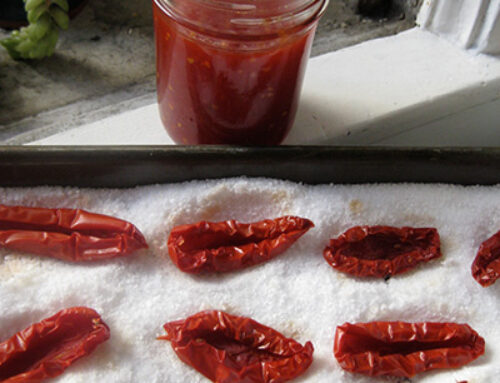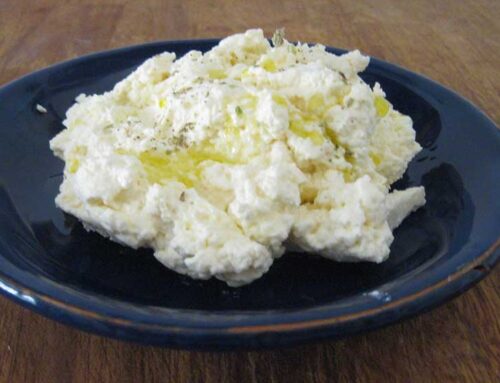For my most recent pop-up dinner, I braised 32 lbs. of duck legs, leaving me with 3 pints of beautiful duck fat. Have you rendered duck fat? Well, I’m here to tell you how to—and how not to from a recent experience I had in the kitchen, in the hopes that you may learn from my mistake.
There are two ways to render the fat, and I like this tutorial from Green Market Recipes. One involves simmering the fat covered in water, and the second is done without water.
Since I’d already braised the legs in the fat, I was going for method two with no water. After my pop-up dinner, I wanted to clarify the duck fat further, meaning I wanted to pull more solids out of the finished product. The one thing I didn’t really think about is that fat boils at a higher temperature than water. I brought the duck fat to a simmer, and, sure enough, I burnt the solids. This left extremely small burnt pieces in the fat that I could not remove, not even with a chenoix and cheese cloth, and very bitter fat.
The moral of the story is: Render your duck fat at a very low temperature! Take your time!
Now, if unlike me, you have succeeded in creating the perfect rendered duck fat, there are many uses for it: Pie crusts, biscuits, slathered on fresh bread, and duck confit. You can keep duck confit for months in your refrigerator. I use duck confit as a condiment with marmalades and chutneys on a cheese board, and in many other dishes like scrambled eggs and salads.
Keep a look out for duck confit salad on my spring pop-up menu! Although, now I will have to buy my duck fat. Booooo.
I’ve included my favorite recipe for duck confit below, adapted from the book by Thomas Keller, Ad Hoc At Home. This is my ultimate “go to” book for all the basics, as well as a lot of mentorship on how to create them perfectly:
DUCK CONFIT
Store for up to six months. Serves 6 as an appetizer or light main meal.
- • ½ C kosher salt
- • 2 T light brown sugar
- • 2 bay leaves, broken into pieces
- • 2 T chopped thyme
- • ¼ c packed flat-leaf parsley leaves
- • 1 tsp. black peppercorns
- • Eight 8-oz whole Pekin duck legs or 32-oz other duck legs
- • 6-8 C rendered duck fat, melted
- Combine the salt, sugar, bay leaves, thyme, parsley, and peppercorns in a small food processor and process until well combined. Set aside.
- Pull away and discard excess fat from the duck legs. With scissors, trim the excess skin near the bottom of the legs and around the edges, leaving at least a ¼-in overhang of skin.
- It is important to know the weight of the duck legs when salting them, so that you do not over salt them; the correct ratio is 2T of herb salt to 1 lb. of duck legs. Rub about 1 T herb salt over reach leg, rubbing a little extra on the thicker parts and around the joint. Put the legs flesh side up in a single layer in a baking dish that holds them comfortably (use two if necessary), cover with plastic wrap, and refrigerate for 24 hours.
- Position an oven rack in the center of the oven, put an oven thermometer on the rack, and preheat the oven to 190 degrees F (it is important to check the heat from time to time while the legs cook to be certain that the oven maintains the proper temperature).
- Rinse the legs well under cold water and dry thoroughly with paper towels. Layer the duck legs (no more than 2 deep) in a 9- to 10- inch heavy ovenproof pot with a lid. Add enough melted duck fat to cover the legs and heat over medium heat just until the fat is warm.
- Cover the pot, transfer to the oven, and cook for 8-10 hours. Check a duck leg by carefully lifting it from the fat and piercing it with a pairing knife: the meat should be meltingly tender. If necessary, return the duck to the oven for up to 2 hours longer, checking the legs frequently (if they cook for too long, they may fall apart when they are sautéed). Remove from the oven and let the duck cool in the fat.
- Gently lift the legs from the fat and place in a storage container (see note). Strain the fat over legs (but not the juices, which will have sunk to the bottom). They should be completely submerged in fat; if necessary, transfer them to a smaller container. Cover and refrigerate.
- When you are ready to serve the duck lets, remove the container from the refrigerator and allow it to sit at room temperature for an hour or two to soften the fat enough to remove the legs without breaking them apart, or microwave them just long enough to soften the fat.
- Preheat the oven to 350 degrees F. Set a cooling rack over a baking sheet.
- Pour some duck fat into each of two large frying pans and heat over high heat until very hot (or 2 batches in one skillet). Arrange 3 legs in each pan, skin-side-down, and cook, without moving them, for 1 minute. Reduce the heat to medium and cook until the skin is richly browned, about 3 minutes.
- Carefully transfer the duck legs, skin-side-up, to the cooling rack and put in the oven to heat through, about 10 minutes.
Note: You can keep the confit for months if you remove all the meat juices from the fat. After cooking, transfer the legs to a container and refrigerate. Refrigerate the fat separately: as it solidifies, the meat juices will settle to the bottom of the container, where they will jell. When the fat has solidified, carefully spoon it off, without disturbing the jell; the jell can be frozen and added to soups. Melt the fat and pour it through a strainer over the duck.


